Originally published in BOMB Magazine on May 6, 2016

Carlos Motta, still from Deseos / رغبات, video, 2015. Courtesy of Mor Charpentier Gallerie, Paris and Galeria Filomena Soares, Lisbon.
The first encounter I ever had with Carlos Motta’s work was at the New Museum in New York, when I saw his 2012 exhibition Museum as Hub: Carlos Motta: We Who Feel Differently. It was a significant moment for me. I’d been frustrated by the limitations of documentary practices in my own work, but Motta’s installation suggested that the term “documentary” could open up multiple possibilities in content and form. Motta’s research-based practice is constituted by discursive spaces, presented in a variety of different spatial forms, which create—in his own words—“counter-narratives that recognize suppressed histories, communities, and identities.” In particular, he recognizes the particular histories of queer culture and activism, paralleling the multiplicities of queerness itself.
Earlier this year Motta and I had a chance to publicly speak about his interest in research and documentary aesthetics at Pratt Institute, but that conversation only broached the surface of his interests. This past fall, he presented We Who Feel Differently together with his newest work Patriots, Citizens, Lovers… (2015) at the PinchukArtCentre (PAC) in Kiev, a result of his winning the Future Generation Art Prize in 2014. It felt appropriate to continue our conversation for BOMB and discuss his relationship to art, activism and to the experience of presenting this work in Ukraine, a country with such heightened animosity towards LGBTI individuals.
Cat Tyc At your artist talk at Pratt Institute, you spoke of your desire to “puncture the institution” with some of your works. You were referring to your experiences negotiating the relationship between cultural institutions and the marginal perspectives of sexual and gender politics that are often the focus of your projects—most specifically We Who Feel Differently(2012) and Gender Talents (2015). I interpret this not as a confrontation for confrontation’s sake but more as an insistence to counter a mainstream narrative that assumes that the struggles of LGBTI communities have lessened since the legalization of gay marriage. Maybe this is too specific an example to aptly consider the wide range of topics addressed in your work. Really, I’m most curious to know where your interest and insistence in constructing queer counter-narratives comes from?
Carlos Motta There are two parts to your question that I would like to address: first, the experience of strategically presenting a socially-engaged project in an art institutional context, in order to profit from an institution’s visibility and to shed light onto a social issue that is generally neglected by other channels. Gender Talents is an archive of video portraits with trans and intersex activists in four countries: Colombia, Guatemala, India, and the United States. The motivation for the project was to construct an online platform and a discursive space to show the ways in which grass-roots gender identity activism and forms of self-determination are being established among international trans communities. In Guatemala, I worked closely with REDMMUTRANS, a young organization run by and for trans sex workers who are interested in self-empowering trans women of different class, ethnic, and racial backgrounds to defend themselves from systemic abuse. They have minimal infrastructure or financial support and have faced huge obstacles to self-organize.
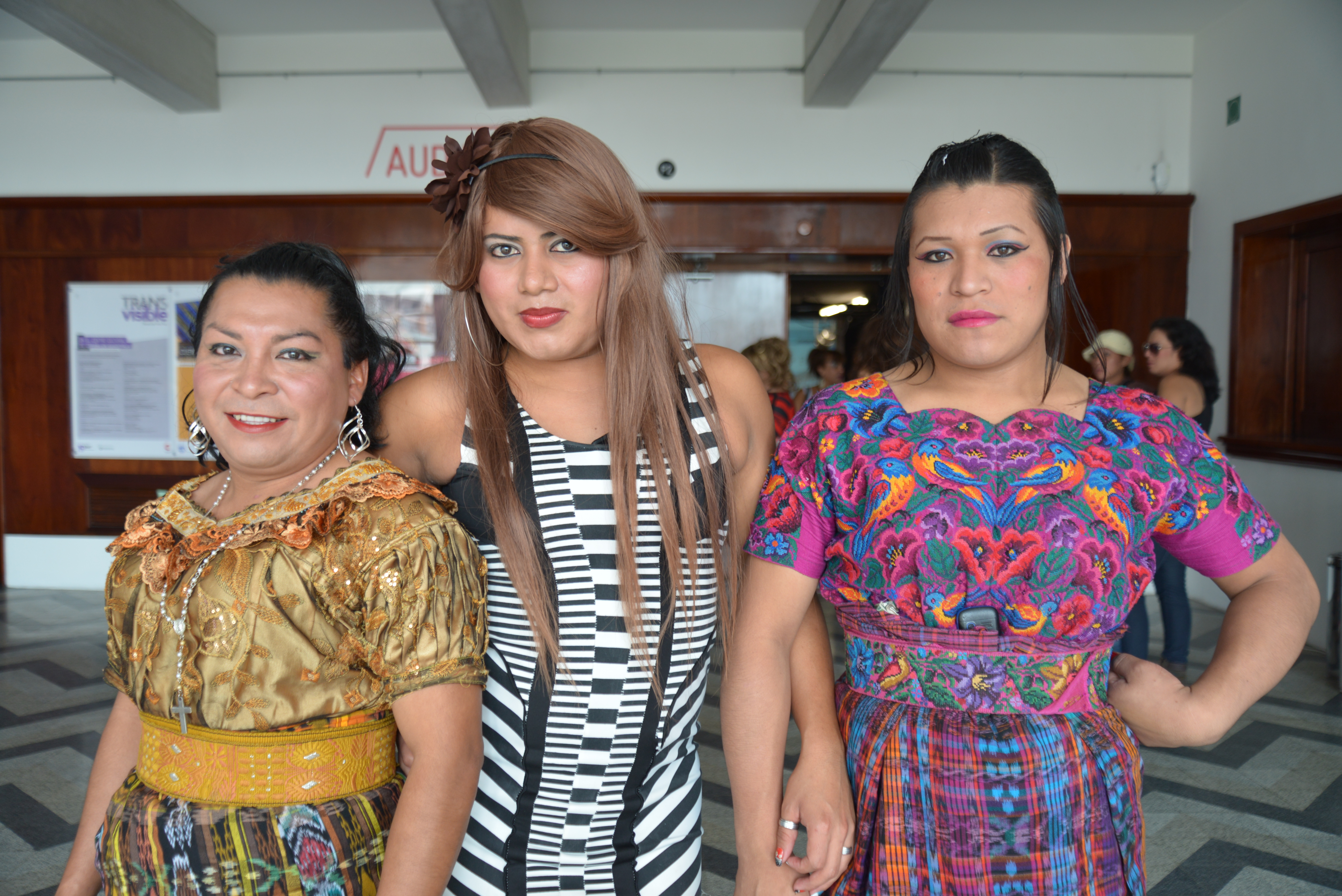
Gender Talents, 2015. Courtesy of the Artist.
Understanding that their primary political goals are visibility, the group’s legitimation as a political organization, and access to funds, its founder Galilea Bracho and I knew that being invited by curator Cecilia Fajardo-Hill to show the project at the 19 Bienal de Arte Paiz in Guatemala represented a unique opportunity to speak out to mainstream society. The media in Central America pays close attention to the works presented within the framework of the Bienal, thus giving us a stage to communicate the needs of a population that has been largely ignored. So instead of simply screening the videos in one of the exhibitions at a museum as art, Galilea and I proposed a screening and panel discussion at the Spanish Cultural Center (CCE), one of the city’s most respected venues. Cecilia and the CCE’s then-director David Ruiz supported the initiative and we were able to invite over 200 trans women, including sex workers and indigenous trans women, to come and gather at a space where they had never felt welcome before and mingle with NGO directors and other government officials. The event was a success: REDMMUTRANS was able to further their institutional relations to raise funds and visibility.
This is what I referred to as a “puncturing” of the institution: a manipulation of the institutional context to profit from its privileged position within society, as well as to use my own privilege as an “established international artist” to make a useful (not only symbolic) action for REDMMUTRANS. I’m not so concerned with labeling this action as art, but instead with developing an ethical artistic practice that reconsiders the act of (documentary) representation.

Gender Talents, 2015. Courtesy of the Artist.
My interest in creating counter-narratives stems from a deep distrust of the ways in which queer lives and politics tend to be discussed and represented by the mainstream LGBTI movements and the media. A common narrative of “progress” has been shaped by an international movement that has embraced assimilation as a moderate strategy for social change; it’s a strategy that’s often complicit with reproducing the very systems that have historically produced discrimination: patriarchy, legality, militarism, marriage, the family, traditional values, etc. The marriage equality campaign perfectly exemplifies this conservative move: defined as the civil rights issue of our times, countless resources have been invested in passing laws that would recognize same-sex marriages as “equal.” In my view this focus is myopic at best. As sexual minorities, we have the opportunity to challenge institutions to produce radical changes, but we have conformed to being included and tolerated. What happened with radical visions of the future? In light of this, I believe that recording, documenting, researching, and producing other narratives is an act of resistance. We need to produce documents and histories of difference.
CT Your piece Patriots, Citizens, Lovers… (2015) seems different from your other recent works. It features interviews with eleven Ukrainian LGBTI activists who put themselves at risk by publicly speaking out about their lives and work. I even noticed that one interviewees’ face, Oksana’s, is blurred in the video. With this work you seem to be returning to the documentary approach of We Who Feel Differently, but this piece has a more heightened sense of urgency due to the political crisis in Ukraine regarding the war with Russia and the repression of LGBTI lives.
What was the process of making Patriots, Citizens, Lovers… like for you? You’re also presenting We Who Feel Differently in the same exhibition in Kiev. How has the Ukrainian audience received the work and how has it differed from past responses in other contexts?
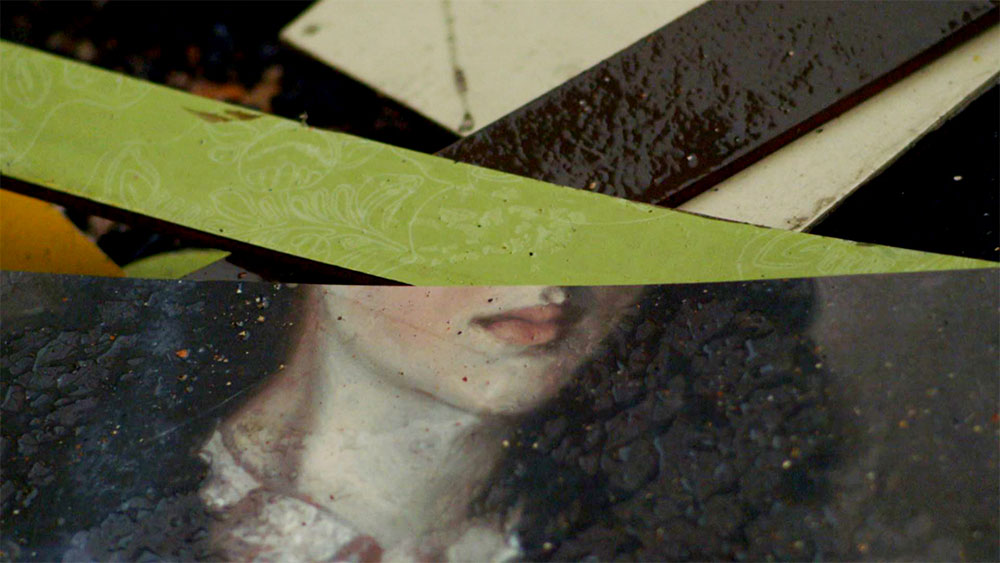
Still from Deseos / رغبات, video, 2015. Courtesy of Mor Charpentier Gallerie, Paris and Galeria Filomena Soares, Lisbon.
CM I was commissioned to produce a work with funds from the PinchukArtCentre’s Future Generation Art Prize, which I was awarded in 2014. With over six thousand visitors per week, PAC is undoubtedly the most visited museum in Kiev; its exhibitions are also widely discussed and reported on by the media. As I started to think about what kind of project to produce for the prize exhibition, I told PAC’s Deputy Artistic Director Bjorn Geldhof that I wanted to use the center’s significant place in Ukraine’s cultural life to denounce the precarious situation of LGBTI lives and politics in the country, and I began to conceptualize a project that would directly involve members of Ukraine’s activist communities. Patriots, Citizens, Lovers… is the outcome of this engagement, and is a collaborative effort with journalist Maxim Ivanhuka, who served as a bridge to the interviewees and who helped me understand the nuanced Ukrainian political context. I created a conceptual framework that used the ongoing war with Russia and the growing right-wing rhetoric of nationalism and patriotism that is promoted by radical groups, conservative forces, and pro-Russian allies; it deems LGBTI subjects as unpatriotic, un-nationalistic and marginal, which I used as a point of departure to address the many ways in which war affects the lives of minority communities. The work uses ten thorough interviews to document the systemic discrimination faced by these communities. Can one be gay or trans and a patriot? What is the place of gender and sexual minorities in the Revolution of Dignity? Issues of sexuality and gender are often deemed secondary to the primary problems of war, political and economic crisis, etc. So what kinds of lives are LGBTI people forced to live when there aren’t any legal frameworks in place, or when respectful societal conversations about sex and gender are non-existent?
Aesthetically, the project is direct: a large wooden platform serves as a structure for vertical screens that present life-size videos of the activists, who speak to the public face-to-face. The backs of the screens are blue and yellow panels, the colors of Ukraine’s national flag. Appropriating the national colors was a strategic decision to resist the exclusionary discourse of the Right that prides in alienating LGBTI people. The use of all the patriotic symbols, including the word “Patriots” in the title, is both a provocation and a claim of belonging. The activists chose to show their faces—or not. Oksana, for instance, despite publicly working as a lawyer for trans rights in Kiev, was fearful of the military in Eastern Ukraine, the region she had to flee because of the war. She wanted her face blurred to avoid potential harassment in the future. But most others speak out publicly and fearlessly. In order to provide a larger context for the piece, we chose to include We Who Feel Differently in the preceding room as it includes a conversation with dozens of international LGBTI and queer people about the histories of the sexual movements since the late 1960s. The response to both has been enlightening. Despite fearing aggressive feedback, the public has positively engaged the works and a productive conversation has formed around the notions of citizenship as sexuality.
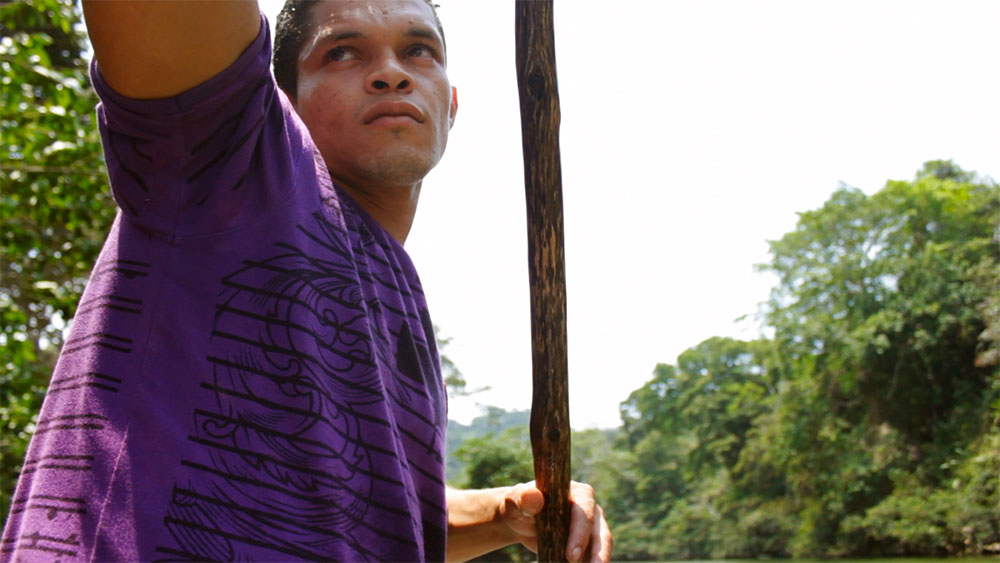
A still from Nefandus, 2013, video. Courtesy of Instituto de Visión, Bogotá, Mor Charpentier Galerie, Paris and Galeria Filomena Soares, Lisbon.
CT Your Nefandus Trilogy and Deseos / رغبات deal with lost and forgotten histories of homoeroticism during pre-Hispanic and colonial times. There’s a great deal of violence in those stories, such as the systemic erasure of history and premeditated exclusion. Histories of violence are also intrinsically a part of the We Who Feel Differently and Gender Talentsprojects, where the subjects narrate and express strong experiences of social discrimination.
Can you speak about your relationship to violence? Is violence itself a topic that propels you to make work?
CM Queer lives are conditioned by violence. Some experience physical violence and others emotional violence, but most queers have formed their identities dealing with the fear of exclusion, discrimination, rejection, bullying, etc. I spend a great amount of time thinking of the effects of violence and how it manifests not only on psyches and bodies, but also on all forms of social, cultural, and political processes.
These interests lead me to research colonial subjugation and the ways in which sexuality as a category was imposed onto indigenous cultures by force. As an epistemological category, sexuality for the conquistadors corresponded to a Judeo-Christian framework of reproduction. Homoeroticism was thus framed as a sin and as a crime. If you think of the violent behavior of the Spaniards and Portuguese in the Americas regarding indigenous lives—which include queer lives—one can say that colonial (homo)sexualities are violent from the onset. Pleasure and desire are thus inevitably defined by violence. I often compare orgiastic images with images of indigenous massacres and differentiating the images proves difficult; their representations of pleasure and pain are eerily similar.
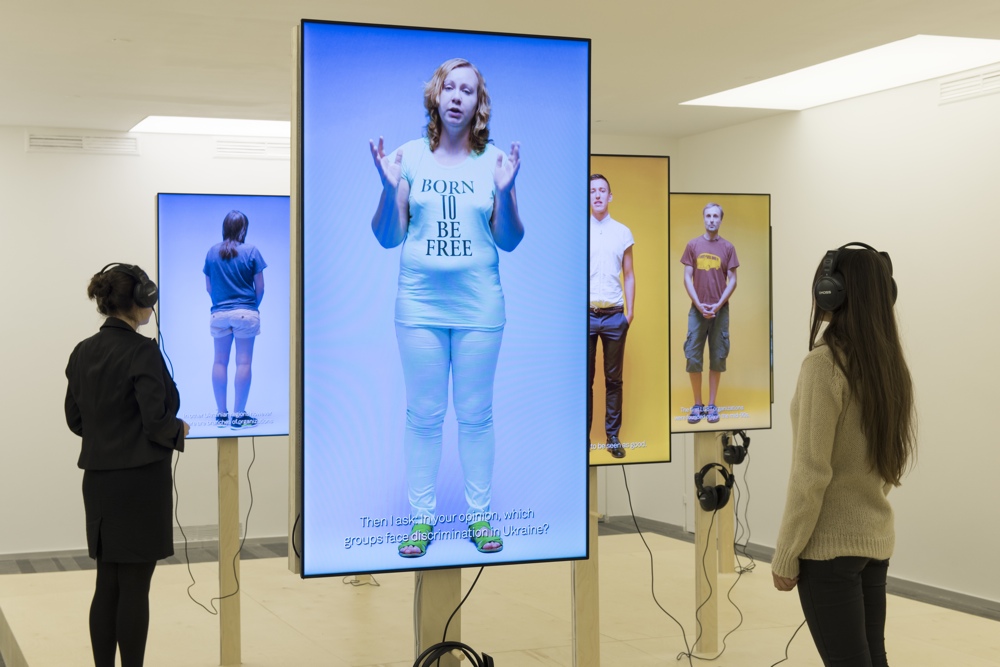
Installation view of Patriots, Citizens, Lovers…, PinchukArtCentre, Kiev, 2015. Courtesy of Instituto de Visión, Bogotá, Mor Charpentier Galerie, Paris, and Galeria Filomena Soares, Lisbon.
I wouldn’t say that violence itself propels me to produce work, but addressing its wide reaching effects as it pertains to processes of historical erasure, amnesia, and contemporary discrimination does. Both the Nefandus Trilogy and Deseos / رغبات are attempts to revisit archival histories in order to analyze and discuss the present. What can we learn from the perils of Martina, an early 19th century hermaphrodite woman (in Deseos / رغبات) whose body was violently observed by doctors, lawyers, and priests in order to make sense of her gender transgression? These stories are ways of understanding processes of categorization and also sadly remind us that after hundreds of years very little has changed regarding the treatment and perception of sexual and gender difference.
CT Based on the extensive research you’ve conducted regarding LGBTI politics, lives, and experiences in many different countries, where do you sense the most necessary ruptures to a notion of a shared international LGBTI experience?
CM The idea of an international LGBTI citizen is a purely colonial invention. It expects political processes, strategies, and philosophical and theoretical models that originated in particular historical contexts in the global north to be digested, applied, and implemented throughout the world. LBGTI politics, as well as queer theory, ought to be challenged from the global south: strategies and theories need to be appropriated, discussed, and reconsidered—to take what is useful and discard what attempts to teach us how to be or think. In my works I have attempted to vividly express my disagreement with the belief that all queers share a common experience and have tried to make evident the ways in which my educational background impels me to think and conceptualize certain things using queer theory as a point of reference. I hope that these conflicts are articulated enough throughout the works, as I want to insist that—even if most queers can share an experience of exclusion or violence as a foundation to our identities—context, history, and locality are even more determining of identity formation than any other ascribed process.
CT I sense that the intention for your projects is to mobilize individuals in various regions to become aware of the experiences of people of color and non-binary conforming LGBTI individuals. You also seem interested in comparing and contrasting these experiences internationally.
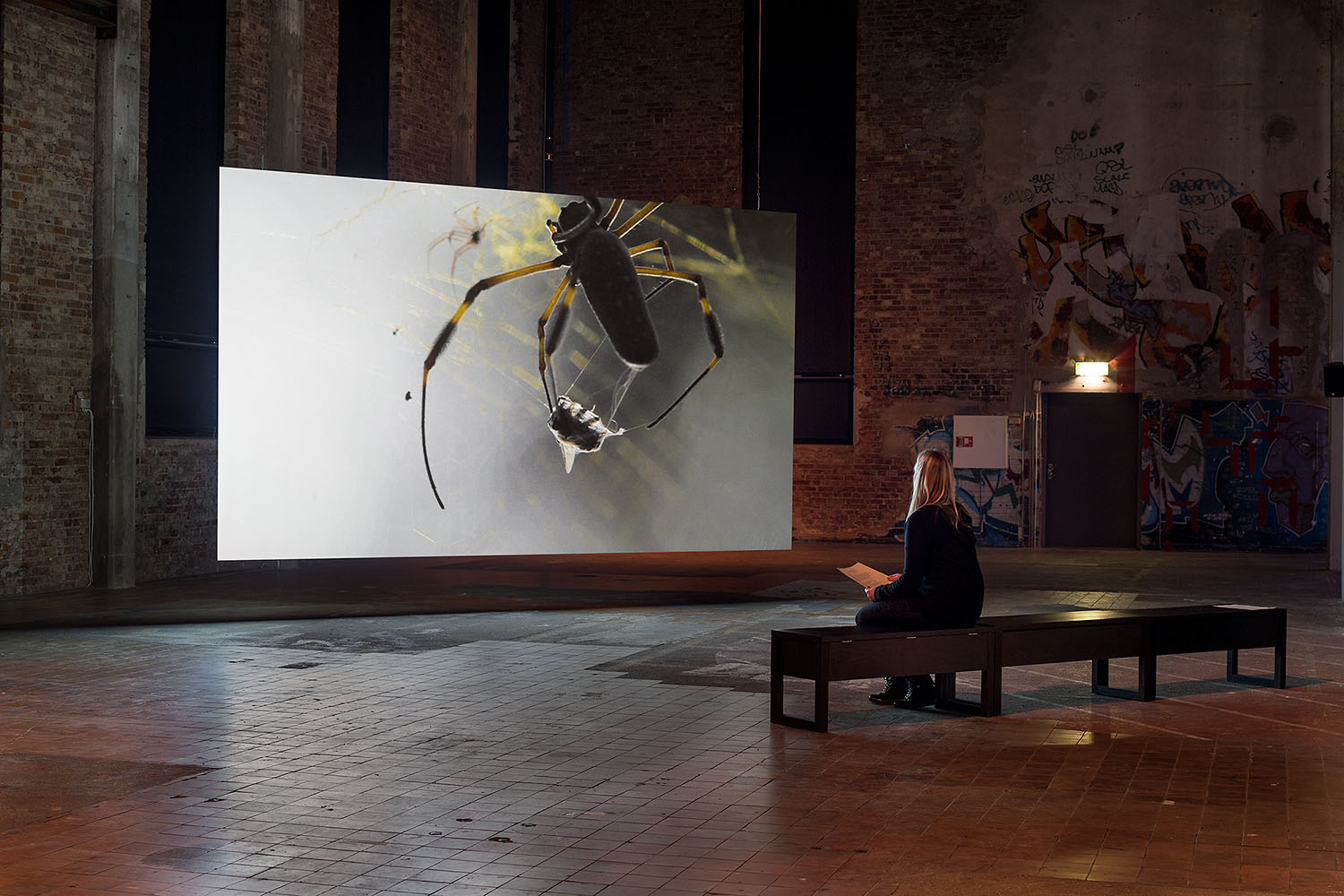
Installation view of the Nefandus Trilogy in the exhibition Carlos Motta: For Democracy There Must Be Love, Röda Sten Konsthall, Gothenburg, 2015. Photo: Hendrick Zeitler.
CM There have been two main angles to my work: on the one hand I’ve been interested in documenting the underrepresented experiences of queer communities around the world in the form of online archives, publications, and public events. These works are about building community and creating discursive spaces. You could say this is a more activist approach to making work, though I’ve also been keen on experimenting with the form, presentation, and display of these projects in institutional contexts as we discussed above. It’s interesting to me to see how the art world overtly embraces (in a somewhat retro, nostalgic way) works that deal with the politics of the 1960s and ’70s (sexual liberation, feminism, civil rights, etc.) but it is distinctly more reluctant to deal with the politics of the present. My work deals with present-day sexual and gender politics, so I have taken this challenge as an opportunity to ask questions about the institutionalization of “the political” from within artistic institutions. On the other hand, I have produced several projects that approach these politics more “poetically” in the form of narrative films, sculptures, and installations. These works are (secretly) more autobiographical: while they engage with history and politics they also reveal the ways in which I’ve dealt with those political histories from my own experience and from my own skin. Ultimately, I want to think that my work is as personal as it is political and that the different ways I’ve employed to call truth to power may be generative for others to speak out, to reveal things that have remained hidden, and to make others question their beliefs with uncomfortable truths.
Cat Tyc is a Brooklyn based writer and artist. Her videos have screened locally and internationally at the Microscope Gallery, Anthology Film Archives, CUNY Graduate Center, Brooklyn Museum, Kassel Fest and the PDX International Festival. In 2006, she was awarded a Flaherty Seminar Fellowship. She is co-curator and co-director with Victoria Keddie of the Poet Transmit, a live/recorded broadcast series that explores the projective possibility of poetics in transmission. Her most recent writings have been published in Weekday, The Sink Review and6×6. Currently, she is an MFA candidate in Writing/Activism at Pratt Institute.